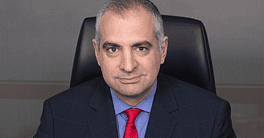Special Report | Global Transaction Banking 2015 Preview
Last year brought a vastly altered landscape for transaction banking—and the same is likely to be true of 2015. Regulatory reform and new developments in data analytics and mobile banking will drive change.
Regulation was a key transaction banking theme throughout 2014. Migration to the Single Euro Payments Area (SEPA) took place—albeit several months later than originally planned—while Basel III’s capital requirements came into effect. Other regulatory highlights included the arrival of a shorter securities settlement cycle in Europe.
Much has already been achieved—but the topic of regulation will remain front and center in the year ahead. “For 2015 a second Basel III metric, the liquidity coverage ratio, will become binding for the banking industry,” notes Ruth Wandhöfer, global head of regulatory and market strategy at Citi. “This will impact on the overall balance-sheet management of banks, which also feeds through to the transaction banking business, reducing the liquidity value of corporate and financial institution deposits.”
Efforts will continue to prepare the corporate community for these changes while solutions are adapted in the deposit space, according to Wandhöfer. “The combination of capital and liquidity requirements will continue to drive banks’ business model adaptations, with a focus on balance-sheet-friendly types of services,” she says.
Other regulatory developments in the pipeline include the arrival of PSD II (Payment Services Directive) in Europe, as well as a continuing focus on bank structural reform and ring-fencing. Meanwhile, Know Your Customer (KYC) compliance is becoming a key topic for transaction banks. KYC regulations vary considerably between jurisdictions, making compliance particularly challenging for banks. As a result, efforts are under way to streamline this process by adopting a more collaborative focus across the industry.
“There are significant differences in the types of information required in different regions, and I think everyone sees the value in terms of efficiency if we could have a database of required information to comply with anti-money-laundering (AML), KYC and due diligence requirements,” observes Dub Newman, head of North American global transaction services at Bank of America Merrill Lynch.
Notable developments in this area include global bank messaging provider SWIFT’s efforts to develop a KYC Registry in collaboration with 12 global banks and 10 other large institutions. Other collaborative solutions to KYC compliance challenges include a KYC data-sharing portal developed by Markit and Genpact—which has over 600 buyside firms and corporations registered.
The next phase for regulators is Know Your Customer’s Customer. “Knowing not only our customers but also their underlying customers and the relevant activity flowing through the payment system is becoming a critical function that regulators want banks to provide,” explains Ather Williiams, head of global payments and GTS strategy for Bank of America Merrill Lynch. “This creates a different level of visibility and transparency with a whole new layer of complexity.”
Regulatory requirements aside, some banks are focusing on the activities of their customers’ customers in order to differentiate their offerings. “Increasingly, there’s an opportunity for transaction banking providers to create more loyalty among our
customers’ clients—for example, by helping an insurer to pay their customer quickly using electronic channels,” says Newman.
On the payments front, corporates may have successfully migrated to SEPA, but multinational corporations, says Sabine Zucker, head of trade finance and transaction banking at Raiffeisen Bank International, are continuing to focus on centralizing their cash and treasury management activities, with some companies looking to use XML (eXtensible Markup Language)-formatted payments (which are mandated under SEPA) in non-SEPA countries and currencies.
Regulatory change is also prompting banks to assess their payments infrastructure, according to Ireti Ogbu, Treasury and Trade Solutions payments and receivables head, EMEA, Citi. Ogbu says that the emergence of new technology in the payment space—such as real-time payment systems, mobile payments and e-commerce capabilities—is another catalyst for change, as is increased regulatory oversight.
At the same time, Ogbu says, themes such as data management, data mining and data security are emerging. “In response to these drivers and enablers, banks are actively seeking to enhance their underlying platforms to introduce greater standardization, scalability and efficiency while [developing] value-adding services for their target clients,” says Ogbu, adding that the greater standardization of payment systems will lead to greater efficiency in the corporate financial value chain.
TECH INNOVATION
On the technology front, transaction banks will be building out existing products and solutions, as well as investing in innovations. Christine Barry, research director of wholesale banking at consultancy Aite Group, predicts that investments in transaction banking technologies will increase in 2015, as many institutions are still running outdated and siloed solutions. User experience is likely to be a particular focus. “Banks are moving forward with next-generation corporate portal strategies to provide a more integrated experience for customers, as well as launching new dashboards that put greater control and levels of customization in the hands of the end user,” she says. Corporate executives are looking for single-portal access to all of a banking partner’s services and solutions, and an easy-to-use, intuitive interface with simple access to all of their most pertinent data, presented in a graphically pleasing, interactive and straightforward way and customizable to the individual user’s needs and job function. They want increased self-serve options—they don’t want to just look at their data, they want to be able to make use of it.
Mobile banking is likely to be a key theme in 2015 according to Barry. “Today less than 10% of corporate treasurers bank via a mobile device,” she says. “This percentage will grow during 2015, as more banks roll out smartphone and tablet offerings, and concerns around security become less of a barrier.” Barry adds that the mobile channel will be used for more than simply urgent transactions.
BofA Merrill’s Williams adds that one of the main developments set to continue into 2015 is the increased level of collaboration between financial institutions and other technology providers. “In the past, a lot of the burden for corporates was to create a new technology solution, often by pulling together traditional enterprise resource planning (ERP) or treasury workstation (TWS) systems with newer point-of-sale solutions in their own back office,” he says. “As a transaction bank we are now working more proactively with other players in the ecosystem to provide clients with greater levels of integration.”
Meanwhile, working capital management is becoming a higher priority for corporates operating in Asia, according to John Laurens, managing director and head of global transaction services, DBS Bank. “Driven by the need to sustain a competitive advantage amidst challenging market conditions, corporates are working with their transaction banks to identify and remove inefficiencies in their physical and financial supply chains at an intensity not previously seen,” he says.
Laurens adds that banks have extended their offering in this area by developing working capital advisory platforms that provide a range of value-added services, including industry benchmarking analyses and market insights as well as innovative digital solutions enabling corporates to drive improvement in their cash conversion cycles—such as host-to-host bank-to-ERP connectivity and online letter of credit applications.
Aside from these developments, a further effect of the changing regulatory environment could be an even greater focus on transaction banking within financial institutions. Transaction banking has already enjoyed a higher profile of late as its stable flows became more attractive following the financial crisis and regulatory changes that have affected other parts of the business. In 2015, Barry predicts, the importance of transaction banking within financial institutions will continue to rise, given the potential for new streams of revenue to replace those lost by recent regulations.



